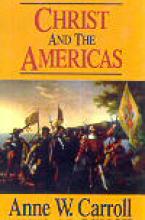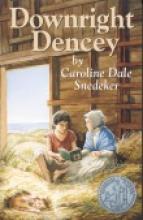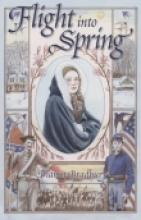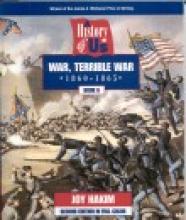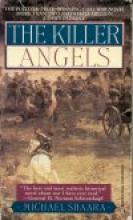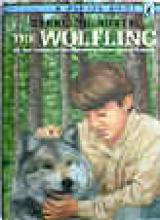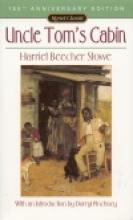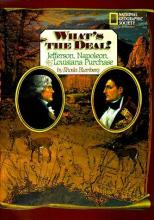United States History - High School
Christ and the Americas
Number of pages:
440 pages
Copyright:
1997
Publisher:
TAN Books and Publishers
Binding:
Softcover
Subject(s):
Setting:
Grade / Age level:
Resource Type:
Review:
Christ and the Americas is a high school American history text by the same author as Christ the King, Lord of History It is difficult to describe in a paragraph or two a book that covers so much. The book is packed with stories and information about major aspects of American history, from the ancient civilizations of the Mayans, Aztecs and Incas, to post-Cold War America. Unlike many texts which dwell almost exclusively on the U.S., we learn about the conquests, explorations and revolutions of the countries of central and South America as well (although there isn't very much about Canada). The book includes major events and people in American history without neglecting the contributions of notable Catholics, and also without being a book exclusively about Catholics. Government policies and social concerns (such as slavery, abortion, immigration and government welfare programs) are addressed from a Catholic viewpoint and discussed in the context of contemporary papal encyclicals. On a practical note: World Wars I and II are addressed in this book from the viewpoint of the role the U.S. played in them. These sections are VERY informative, but will be better understood only after studying these time periods in a more in-depth fashion in a World history text such as Christ the King, Lord of History by the same author. Christ and the Americas is highly recommended for both teenagers and adults - it reads almost like a novel. Each chapter includes review questions and some project ideas. The text is not illustrated, except for maps where appropriate (and these are very helpful). Also includes a complete index.
Perspective:
Catholic
Reviewed by:
First reviewed:
3-25-2000
Downright Dencey
Subject(s):
Setting:
Grade / Age level:
Review:
This charming story, a Newbery Honor Book for 1928, has just been reprinted by Bethlehem Books. Set on the Island of Nantucket, off of Cape Cod in Massachusetts in the 1810s and 1820s, the story follows the Coffyn family in the largely Quaker community of Nantucket, and especially their daughter Dionis "Dencey". Dencey is a young girl from a proper Quaker family with a temper and a heart of gold. She befriends an outcast boy and teaches him to read in order to make up for hurting him in a fit of temper. Their friendship baffles Dencey's parents and the community but bears fruit in unexpected ways. It is a lovely story, filled with truths about faith, family and friendship. It is a little complex, though, and (as recommended by the publisher) is probably best for ages 12 and up.
Additional notes:
This book was donated for review by Bethlehem Books.
Reviewed by:
First reviewed:
7-31-03
Flight into Spring
Subject(s):
Setting:
Grade / Age level:
Review:
This is a sweet, but challenging story about a 16 year old girl from pro-Confederate Maryland who marries a Union soldier from Connecticut just after the Civil War. The story presents the conflicts of hard feelings and the need for healing between North and South in the context of family relationships. It seems quite unusual as stories usually lead up to an unknown "happily ever after." Here, the emphasis is on this young bride's married life. Cultural and religious differences as well as bitterness from the war make life quite difficult for this young bride living with her husband on his parents' farm. The story makes an interesting backdrop to consider ideas about developing relationships, the give-and-take necessary in marriage and the idea of love and commitment. Appropriate for ages 12 and up.
Reviewed by:
First reviewed:
6-24-05
History of Us, Volume 6: War, Terrible War
Subject(s):
Setting:
Grade / Age level:
Review:
This is an interesting, very readable overview of the Civil War. There is a significant focus on the issue of slavery as a plague upon American culture of the time. The author's basic thesis is that, while different people fought for different reasons and the focus was especially blurred when the war began (when there was more emphasis on preservation of the union), the war was essentially fought over the issue of slavery.
Although the author herself is not consistent on this issue in her final volume, a lot can be learned from studying her stories, ideas and conclusions about slavery in light of the current abortion debate. A thoughtful older student might even study this volume thoroughly and compare it with Hakim's significantly-problematic treatment of the 20th century. Hakim makes a significant effort to be fair to the intentions of both North and South while clearly believing that the North has the upper moral hand on the slavery issue.
Although the writing style is quite engaging, all the side bar quotes and information do make a cover-to-cover reading a little choppy. This volume could be used very beneficially as a "spine book" to tie together a study of the Civil War with an emphasis on great stories such as Uncle Tom's Cabin and Killer Angels. Most approriate for grades 6-8 but usable for anyone studying the Civil War. The book can have the effect of kindling an interest in the topic and inviting the student to learn more on their own.
Although the author herself is not consistent on this issue in her final volume, a lot can be learned from studying her stories, ideas and conclusions about slavery in light of the current abortion debate. A thoughtful older student might even study this volume thoroughly and compare it with Hakim's significantly-problematic treatment of the 20th century. Hakim makes a significant effort to be fair to the intentions of both North and South while clearly believing that the North has the upper moral hand on the slavery issue.
Although the writing style is quite engaging, all the side bar quotes and information do make a cover-to-cover reading a little choppy. This volume could be used very beneficially as a "spine book" to tie together a study of the Civil War with an emphasis on great stories such as Uncle Tom's Cabin and Killer Angels. Most approriate for grades 6-8 but usable for anyone studying the Civil War. The book can have the effect of kindling an interest in the topic and inviting the student to learn more on their own.
Perspective:
secular
Reviewed by:
First reviewed:
9-19-02
John Treegate's Musket
Subject(s):
Setting:
Grade / Age level:
Review:
Reviewed by:
First reviewed:
11-4-2007
The Killer Angels
Subject(s):
Setting:
Grade / Age level:
Review:
This is really a rather remarkable novel about the battle of Gettysburg, Pennsylvania - probably the most famous battle of the Civil War. The Southern Armies, under General Lee, decided to invade the North in order to strike a blow that would "hit home" and make the Northerners wish to end the war. North and South met in the small farming town of Gettysburg in Pennsylvania and engaged in bloody battle for three days. The cost in human life was devastating to both sides. The defeat of the South at this battle seemed avoidable, but turned out to be decisive in the overall outcome of the war.
What is remarkable about this book is both the completeness of the picture we are given of the importance and complexity of the battle and the humanity of its key players. It is surprisingly unbiased toward either side, instead focusing on understanding the multitude of motivations that influenced the key players. The book contains twenty-three chapters. Each chapter tells a piece of the story from the point of view of different characters (a number of the characters have more than one chapter - four chapters are from General Lee's point of view, six chapters are from Colonel Chaberlain's point of view, etc.) The author seems to take special care in elaborating upon the South's General Longstreet and the North's Colonel Chamberlain.
High school students and adults will come away from this book with a much fuller sense of the gravity and scope of the civil war. It is intense, although not overly graphic and does contain some coarse language (which is both realistic and not overdone).
Note: The recent movie, Gettysburg, is based on this book and is quite good. It is remarkably non-gory without destroying the necessary sense of reality. I would recommend reading the book first as it provides some details not shown in the movie and makes it much easier to follow the multitude of characters. My one caveat is that I didn't care for the way General Lee was portrayed in the movie. They left out some important details that would have affected his admittedly poor decisions (namely his bad health) and in general, I found Martin Sheen's portrayal too buffoonish and undignified in contrast with the book.
What is remarkable about this book is both the completeness of the picture we are given of the importance and complexity of the battle and the humanity of its key players. It is surprisingly unbiased toward either side, instead focusing on understanding the multitude of motivations that influenced the key players. The book contains twenty-three chapters. Each chapter tells a piece of the story from the point of view of different characters (a number of the characters have more than one chapter - four chapters are from General Lee's point of view, six chapters are from Colonel Chaberlain's point of view, etc.) The author seems to take special care in elaborating upon the South's General Longstreet and the North's Colonel Chamberlain.
High school students and adults will come away from this book with a much fuller sense of the gravity and scope of the civil war. It is intense, although not overly graphic and does contain some coarse language (which is both realistic and not overdone).
Note: The recent movie, Gettysburg, is based on this book and is quite good. It is remarkably non-gory without destroying the necessary sense of reality. I would recommend reading the book first as it provides some details not shown in the movie and makes it much easier to follow the multitude of characters. My one caveat is that I didn't care for the way General Lee was portrayed in the movie. They left out some important details that would have affected his admittedly poor decisions (namely his bad health) and in general, I found Martin Sheen's portrayal too buffoonish and undignified in contrast with the book.
Reviewed by:
First reviewed:
10-17-01
The Wolfling, A Documentary Novel of the Eighteen-Seventies
Subject(s):
Setting:
Grade / Age level:
Review:
Wolfling is the follow up to Sterling North's Newbery Honor book Rascal. The two are loosely related in that they both take place in the wilderness of Wisconsin. Rascal is largely an autobiography of North's unusual childhood in Wisconsin in the early part of the 20th century while Wolfling takes place in the time that North's father was a boy soon after the Civil War. It is based on the letters that he sent North about his childhood.
The bottom line of the story is that the main character, Robbie, must figure out who he is, and what he wants to do with his life. He comes to discover this through his relationships with both virtuous and morally suspect people who live in his town, and through his relationship with his mother and father, who are going through a similar discernment. Robbie learns how to deal with the morally suspect characters without condoning their actions, while emulating the virtuous characters. His parents are portrayed are virtuous, hard working people who must deal with the hardships of life on the frontier, the hardest of which is the loss of several children. Robbie makes virtuous choices, and in that, the book is a good choice for young adolescents.
North weaves actual historical events and real historical characters into the story and in some ways this is the most interesting part of the story. He spends a good deal of time introducing the reader to Thure Kumlein, a Swedish naturalist who is largely unknown, but made great contributions in natural history research at the time. If I lived in Wisconsin I would be seeking out his works and trying to travel to the part of Wisconsin where this story takes place.
In the back of the book, North gives scientific and historical information about the events described in the story. He describes the Panic of 1873 and the great Chicago fire as adeptly as he describes the habits of wolves in that region. Speaking of wolves, you might wonder why this review doesn't mention the wolfling so far. The dog is important as a plot device to move the story of Robbie's coming of age, but he is not central to the story. However, your more subtle readers may see an analogy between the wolfling and Robbie. The wolfling straddles two worlds, the wild and the tame, just as Robbie straddles much the same two worlds, the "wild" unruliness of the frontier, and the "tame" of schooling and civilization.
I couldn't help comparing this book to North's more widely acclaimed Rascal, and I like this one much better. In Rascal, North spends a lot of time "teaching" about his evolutionary and social philosophies. I had decided my children shouldn't read it until they were older, even though they would love all the outdoor exploits of the main character. I think that Wolfling is a better story with a better message. And, the best part as far as my children are concerned is that Robbie doesn't have to give up the wolfling in the end.
The bottom line of the story is that the main character, Robbie, must figure out who he is, and what he wants to do with his life. He comes to discover this through his relationships with both virtuous and morally suspect people who live in his town, and through his relationship with his mother and father, who are going through a similar discernment. Robbie learns how to deal with the morally suspect characters without condoning their actions, while emulating the virtuous characters. His parents are portrayed are virtuous, hard working people who must deal with the hardships of life on the frontier, the hardest of which is the loss of several children. Robbie makes virtuous choices, and in that, the book is a good choice for young adolescents.
North weaves actual historical events and real historical characters into the story and in some ways this is the most interesting part of the story. He spends a good deal of time introducing the reader to Thure Kumlein, a Swedish naturalist who is largely unknown, but made great contributions in natural history research at the time. If I lived in Wisconsin I would be seeking out his works and trying to travel to the part of Wisconsin where this story takes place.
In the back of the book, North gives scientific and historical information about the events described in the story. He describes the Panic of 1873 and the great Chicago fire as adeptly as he describes the habits of wolves in that region. Speaking of wolves, you might wonder why this review doesn't mention the wolfling so far. The dog is important as a plot device to move the story of Robbie's coming of age, but he is not central to the story. However, your more subtle readers may see an analogy between the wolfling and Robbie. The wolfling straddles two worlds, the wild and the tame, just as Robbie straddles much the same two worlds, the "wild" unruliness of the frontier, and the "tame" of schooling and civilization.
I couldn't help comparing this book to North's more widely acclaimed Rascal, and I like this one much better. In Rascal, North spends a lot of time "teaching" about his evolutionary and social philosophies. I had decided my children shouldn't read it until they were older, even though they would love all the outdoor exploits of the main character. I think that Wolfling is a better story with a better message. And, the best part as far as my children are concerned is that Robbie doesn't have to give up the wolfling in the end.
Reviewed by:
First reviewed:
5-15-04
Uncle Tom's Cabin
Subject(s):
Setting:
Grade / Age level:
Review:
There are a plethora of resources for you to find out the plot of this book out on the web and in the bookstores (eg. Cliffs Notes!!). Many contain "spoilers". And this is OK - after all it's a classic. Moreover, the book is good even if you know what is going to happen. I had the enjoyable luxury of reading this book without having run across the spoilers and with no real knowledge of the plot. I was not required to read it in school - oh happy fault.
The story is about slavery in America. It follows the lives of two slaves in detail, Eliza and Uncle Tom, and introduces us to a great many more slaves and masters and their stories. The two belong to the same master in Kentucky. When the master falls on hard times (from his own inability to manage his estate) he ends up making a deal to sell these two - despite the fact that both of them are rather dear to him and his family. Getting wind of this Eliza decides to run for safety with her son while Uncle Tom allows himself to be taken away from his wife and young children. Eliza risks her life to save her child - running across the ice floes of a partially frozen Ohio river to escape - then finds her way along an underground network. (I won't tell you how her story comes out.) Uncle Tom is sold and resold. He is steadfast in his faith throughout - though not unchanging. Moreover, he affects those who he meets along the way.
This book is written in a very foreign style. - at least to the modern reader. Chronologically Mrs. Stowe's style fits somewhere between that of the crafters of the Constitution and that of Mark Twain. But it is not so easy to put it into any other category. Her own narration is a bit archaic, overtly Christian, sometimes sarcastic, sometimes patronizing, and yet very broad minded. She calls you "gentle reader". She says "now don't you think that is fair?" when she expects you to come to the opposite conclusion. And yet she sees clearly through all the haze of the issue - i.e. the "shades of grey" everyone loves to talk about when they can't bear to say right vs. wrong. And she does more - she presents us with characters who take various positions on the slavery issue. Not just "it's right" and "it's wrong" - but a wide variety of views. She allows them ample voice and reason to discourse their whole argument; she does not make them straw men; she does not mitigate or twist their ideas; she lays out the best cases for and against - and from several different angles. In the midst of this she demonstrates the effects on the PEOPLE who are subjected to the system - those who are the masters as well as those who are the slaves. It is incredibly revealing to have the whole gamut - the entire conversation - all in one accessable story. And it is incredibly convincing!!! Which is why, as legend has it, Abe Lincoln, when introduced to her for the first time declared, "So you're the little lady responsible for this big war."
This book ought to be read for a lot of different reasons.
1) Arguments aren't just fights. When properly done they are tools to get at the truth. This book shows how to argue in the best sense. Reasonable people may have views that are wrong - and can be changed by convincing. (Admittedly, most of those in this book are not, ultimately, convinced - but some are - it's good to see).
2) Style! You have to get a taste of this style of hers. It is a peculiar dish that we rarely see set before us these days (how much early 19th century do you typically read!!).
3) Faith. Uncle Tom has faith in God. It grows stronger and better through his trials. And, it has effects on those he meets and deals with to different degrees and in different ways. (That's realistic.)
4) It shows us that a story can be an extremely convincing form of persuasion.
5) There is a lot revealed about the fundamental nature of man and his free will by exploring the effects of stifling that free will via enslavement. Her characters vary wildly in their reaction to the invisible wall between master and slave. The slaves will react, contort and re-form (or de-form) themselves to this unnatural order. The slave owners must likewise be ignorant or somehow justify their actions. To the author's credit we see that the justification is sometimes wicked or perverted and sometimes just well-meaning but ultimately flawed reasoning.
6) One thing that kind of percolates up from 5) is that there is a difference between the will and the intellect. Philosophers have argued about this for millenia. Many people believe that if someone knows what the good thing is they will naturally want to do it. But knowing and doing ARE different. And some may know what is good but not do it. Some may even want to do what is not good and through an underhanded twist of the will convince themselves (and really THINK they know) that the bad is good. The sooner a person can grasp the difference between the intellect and the will the more they will be able to direct their own thoughts and actions maturely, profitably and honorably.
7) Believe it or Not! This book has some incredible (as in not believable) events. However, Mrs. Stowe, it turns out had done a lot or research. Most of the events were gathered from real events. Even the more incredible ones such as Eliza crossing the river. - Don't try that at home!!!
Age level: High School Freshman +/- a year. Kleenex required.
The story is about slavery in America. It follows the lives of two slaves in detail, Eliza and Uncle Tom, and introduces us to a great many more slaves and masters and their stories. The two belong to the same master in Kentucky. When the master falls on hard times (from his own inability to manage his estate) he ends up making a deal to sell these two - despite the fact that both of them are rather dear to him and his family. Getting wind of this Eliza decides to run for safety with her son while Uncle Tom allows himself to be taken away from his wife and young children. Eliza risks her life to save her child - running across the ice floes of a partially frozen Ohio river to escape - then finds her way along an underground network. (I won't tell you how her story comes out.) Uncle Tom is sold and resold. He is steadfast in his faith throughout - though not unchanging. Moreover, he affects those who he meets along the way.
This book is written in a very foreign style. - at least to the modern reader. Chronologically Mrs. Stowe's style fits somewhere between that of the crafters of the Constitution and that of Mark Twain. But it is not so easy to put it into any other category. Her own narration is a bit archaic, overtly Christian, sometimes sarcastic, sometimes patronizing, and yet very broad minded. She calls you "gentle reader". She says "now don't you think that is fair?" when she expects you to come to the opposite conclusion. And yet she sees clearly through all the haze of the issue - i.e. the "shades of grey" everyone loves to talk about when they can't bear to say right vs. wrong. And she does more - she presents us with characters who take various positions on the slavery issue. Not just "it's right" and "it's wrong" - but a wide variety of views. She allows them ample voice and reason to discourse their whole argument; she does not make them straw men; she does not mitigate or twist their ideas; she lays out the best cases for and against - and from several different angles. In the midst of this she demonstrates the effects on the PEOPLE who are subjected to the system - those who are the masters as well as those who are the slaves. It is incredibly revealing to have the whole gamut - the entire conversation - all in one accessable story. And it is incredibly convincing!!! Which is why, as legend has it, Abe Lincoln, when introduced to her for the first time declared, "So you're the little lady responsible for this big war."
This book ought to be read for a lot of different reasons.
1) Arguments aren't just fights. When properly done they are tools to get at the truth. This book shows how to argue in the best sense. Reasonable people may have views that are wrong - and can be changed by convincing. (Admittedly, most of those in this book are not, ultimately, convinced - but some are - it's good to see).
2) Style! You have to get a taste of this style of hers. It is a peculiar dish that we rarely see set before us these days (how much early 19th century do you typically read!!).
3) Faith. Uncle Tom has faith in God. It grows stronger and better through his trials. And, it has effects on those he meets and deals with to different degrees and in different ways. (That's realistic.)
4) It shows us that a story can be an extremely convincing form of persuasion.
5) There is a lot revealed about the fundamental nature of man and his free will by exploring the effects of stifling that free will via enslavement. Her characters vary wildly in their reaction to the invisible wall between master and slave. The slaves will react, contort and re-form (or de-form) themselves to this unnatural order. The slave owners must likewise be ignorant or somehow justify their actions. To the author's credit we see that the justification is sometimes wicked or perverted and sometimes just well-meaning but ultimately flawed reasoning.
6) One thing that kind of percolates up from 5) is that there is a difference between the will and the intellect. Philosophers have argued about this for millenia. Many people believe that if someone knows what the good thing is they will naturally want to do it. But knowing and doing ARE different. And some may know what is good but not do it. Some may even want to do what is not good and through an underhanded twist of the will convince themselves (and really THINK they know) that the bad is good. The sooner a person can grasp the difference between the intellect and the will the more they will be able to direct their own thoughts and actions maturely, profitably and honorably.
7) Believe it or Not! This book has some incredible (as in not believable) events. However, Mrs. Stowe, it turns out had done a lot or research. Most of the events were gathered from real events. Even the more incredible ones such as Eliza crossing the river. - Don't try that at home!!!
Age level: High School Freshman +/- a year. Kleenex required.
Additional notes:
Many editions available
Reviewed by:
First reviewed:
7-29-04
What's The Deal?
Jefferson, Napoleon, and the Louisiana Purchase
Subject(s):
Setting:
Grade / Age level:
Resource Type:
Review:
National Geographic published some longer, generously illustrated non-fiction picture books, and this is one of them. A great aid to any homeschool's History curriculum. We have picked up several different titles from the library like this one. I, for one, learned a lot! From their site:
This entertaining saga brings a legendary land deal to life. Over 60 reproductions of art from the period, a cast of characters, maps, a timeline, endnotes, a bibliography, and index give young readers all the resources they need to understand the period in which the Purchase took place.
Reviewed by:
First reviewed:
January 29, 2009

